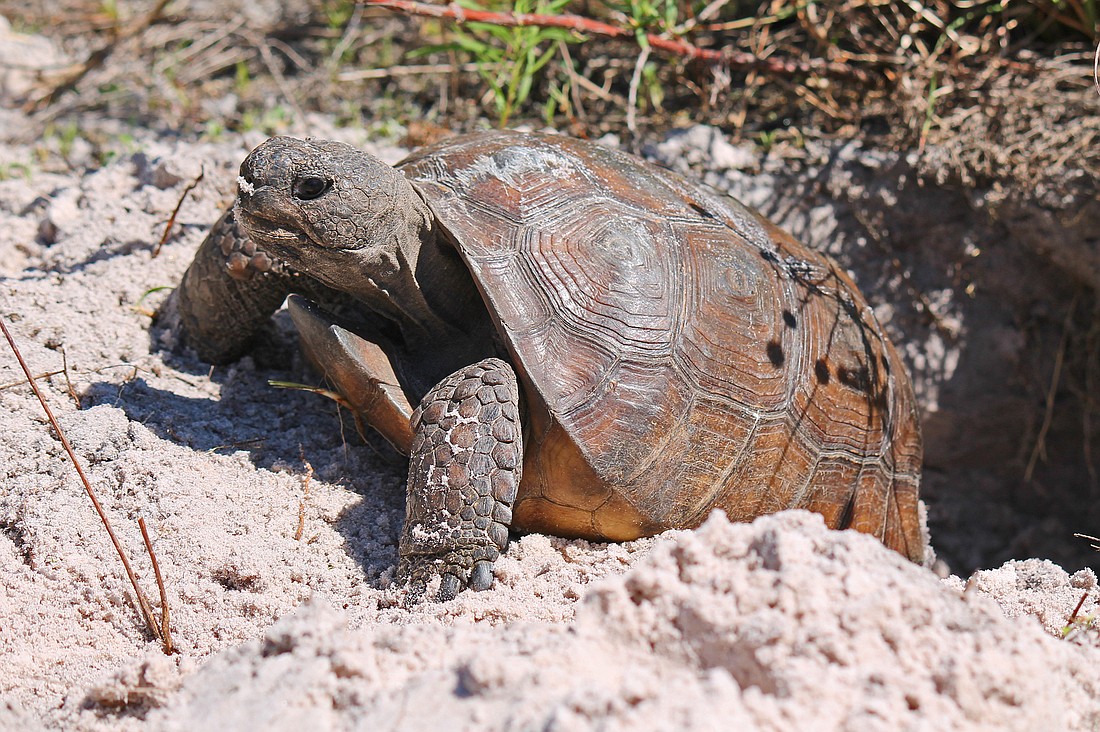- May 3, 2025
-
-
Loading

When Manatee County starts trimming trees and setting fire to brush on 82.6 acres at Rye Preserve in about two months, it won’t look
like it is helping the environment.
But it is, and especially gopher tortoises.
The restoration will boost gopher tortoise populations and create an ecosystem that will sustain other wildlife, such as scrub jays, said Ray Vinson of Manatee County’s Parks and Natural Resources Department.
Manatee County commissioners accepted a $15,000 grant Feb. 12 from the Florida Fish and Wildlife Conservation Commission and approved spending an additional $26,300 to convert overgrown land at Rye Preserve to a scrub and flatwoods habitat prime for gopher tortoises and the wildlife their burrows support.
“We’re trying to return an area to what it would have looked like before Columbus came,” Vinson said.
Vinson said the county will trim and remove oak trees and conduct a controlled burn to establish the habitat. Over time, the area will go from being acres of tall oak and other trees and overgrown palmetto bushes to a more open space with smaller shrubs and shorter oak trees of about 8 feet in height.
Vinson said fire is important because it helps keep the ground bare enough for gopher tortoises to easily travel and to find food. If unmanaged, bushes like palmettos can get too large and block gopher tortoises from passing between them. Tall trees block sunlight and choke out smaller plants that provide food to gopher tortoises and other wildlife.
“Burning is the easiest way to get the habitat to where gopher tortoises are happy,” Vinson said. “It’s all about the shape of the habitat.”
Fires also encourage oak trees to grow laterally, meaning they’ll run roots underground to sprout more trees rather than having one tree grow taller. The smaller oaks, with a height of about 6 feet, are preferred by scrub jays and also produce more acorns, which provide food for the birds and other animals, Vinson said.
Vinson said development of residential communities and major roadways like Interstate 75 and State Road 64 have impeded the natural pattern of fires through the area over time. Manatee County has not burned the area at Rye Preserve previously.
Florida Fish and Wildlife Conservation Commission
spokeswoman Diane Hirth said there are more than 350 documented species that use gopher tortoises for some sort of refuge, whether for shelter from extreme heat or cold or from fire. Of those, about 300 are invertebrates, while the other 50 or so include mammals, birds, reptiles and amphibians. Among them are the Eastern indigo snake, the gopher frog, the Florida mouse and the Florida pine snake.
“Gopher tortoises are ecosystem engineers and a keystone species due to the effect the burrow has on the surrounding ecosystem,” Hirth said.